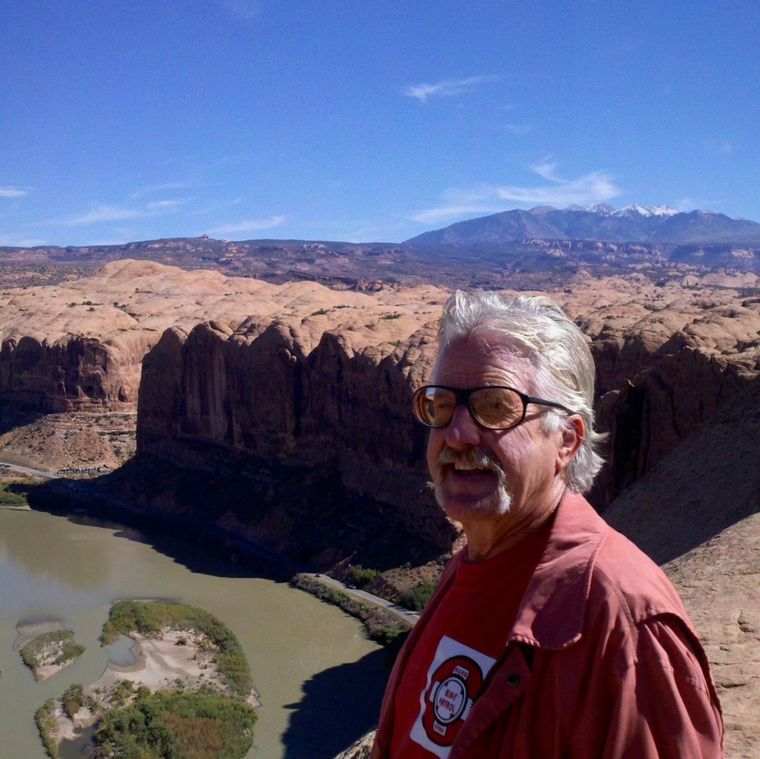There are still a few of us who ride for the Moab Bike Patrol.
The patrol was organized in the mid-1990s when the explosion of mountain bikers on the Slickrock Trail overwhelmed the search and rescue groups of the time. The thought was that an organized, volunteer group could help by decreasing the number of rescues necessary. With some first aid training and a willingness to ride the trails on their bicycles, the group went to work.
I came along later. I wouldn’t make it around the Slickrock Trail on a bicycle, but I rode it often on my motorcycle and was invited to join the group. The leaders recognized that the ability to cover a lot of ground could be useful enough to make up for the philosophical difference the motor created.
I once started hearing about an injured man before I even got unloaded in the parking lot.
“He’s lying next to the trail and he can’t move!” the girl said.
“Where is he on the trail?” I asked.
“He’s out there over that hill next to that other big rock hill,” she said.
“Look at this map. Can you help me figure where he is from this?” I asked. No, we didn’t get anywhere with the map. Others came in off the trail as we talked and I got ready to go. They too had seen the man and his group, but they were no more help in locating him. Others had called 911 and the professionals were coming. But, once at the trailhead, they would need to know where the man was lying.
One issue with rescues on the Slickrock Trail is that the all-terrain vehicle used to transport injured people cannot cross that spot on the trail which is named on the maps as “Trust in Friction.” This spot is a narrow and very steep side hill trail where the ATV would roll sideways down the hill. The spot is about a mile and a half into the trail. If the rescue is on one side of “Trust in Friction,” then the ATV must come in from that side of the trail. If the rescue is beyond “Trust in Friction,” then the ATV goes around the far Hell’s Revenge route and comes in from the far side of the narrow spot.
But where was the man lying and which way would the ATV have to go?
Going the wrong way could cause hours of delay, and I now had been told the man was a doctor who self-diagnosed himself with a broken neck. He had crashed over his handlebars, landing on the top of his helmet, crushing at least one vertebra. He still had some sensation in his limbs, but the jagged bone fragments could easily be cutting his spinal cord. We needed to get him out as quickly and safely as possible, but first we needed to find him.
I started onto the trail. I asked everyone I met about the man. Some had heard of him, but, no, they hadn’t seen him. At a mile in, I decided to try the Practice Loop. It cuts off the main trail near the beginning and, if no one on the main trail had seen this man, maybe he was on this side trail.
He was lying by the trail not too far in. He was conscious and scared and glad to be found. I called the Grand County Search and Rescue team that was at the trailhead and told them where we were and that we’d certainly need the neck injury equipment. The professionals came and got the man from the trail to the hospital, where I heard he was airlifted to surgery in Salt Lake.
But usually, most often, we just hand out advice, like, “Have you seen the river? Then you missed the turn on the trail that takes you out. You’re going around a second time.”
Or, “If you have a camera, I’ll take your picture.”
Or, “When you see town or the river, you’re one-third of the way around. That’s a good place to turn around and save the rest for another day.”
Whatever we can do to help.
Jim Walker rides Slickrock for the Moab Bike Patrol, managed by the BLM, directed by Russ Von Koch.



